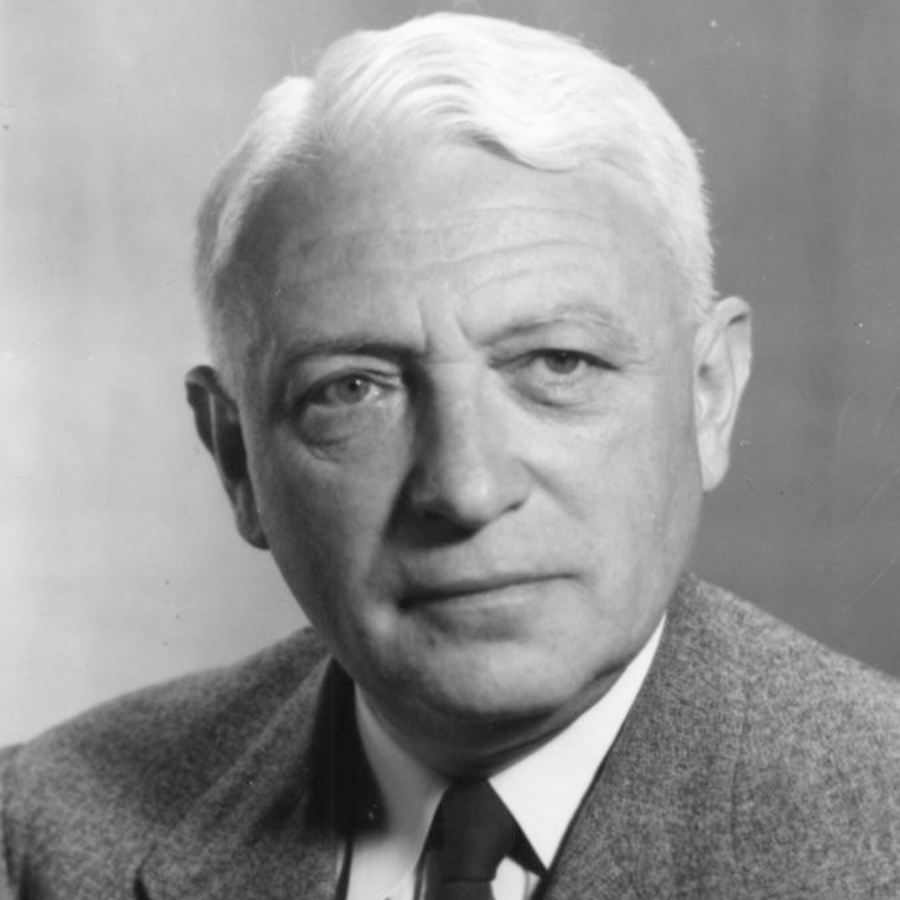 Felix Fleischner, MD
Felix Fleischner, MD
Joined Beth Israel Hospital in 1942
The arrival of Felix Fleischner in September 1942 marked the first full-time and internationally esteemed radiologist at Beth Israel Radiology. He was an employee paid by the hospital and qualified for the performance of diagnostic examinations, the teaching of residents and medical students, and the conduct of clinical investigations, which produced a steady stream of observational articles in radiology publications and other medical journals.
A holocaust refugee from Vienna, Austria, Dr. Fleischner distinguished himself across a broad swath of academic areas and is honored today through the naming of the Fleischner Society, an international, multidisciplinary medical society for thoracic radiology, as well as the Fleischner Guidelines for managing incidentally detected pulmonary nodules. He retired as Beth Israel Hospital's Chief of Radiology in 1960 and we proudly celebrate his legacy through the Risa & Felix Fleischner Graduation Ceremony for residents and fellows each year.
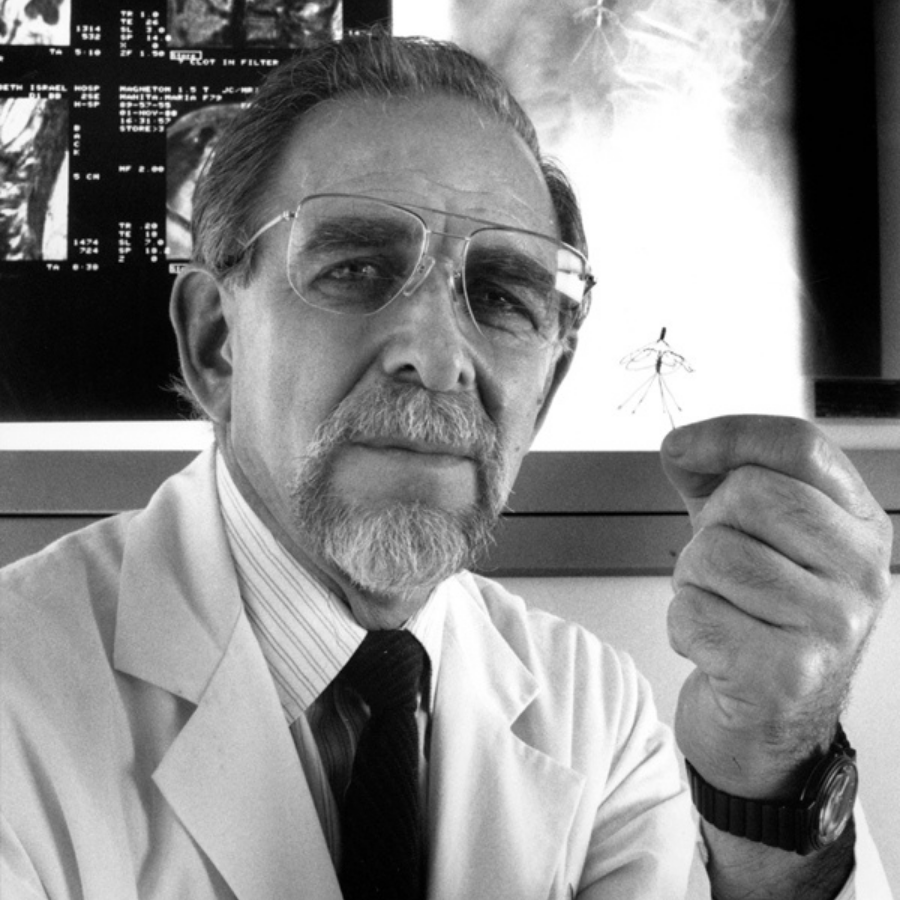 Morris Simon, MB, BCH
Morris Simon, MB, BCH
Joined Beth Israel Hospital in 1958
Born in Johannesburg, South Africa, in 1926, Dr. Morris Simon received his MB, BCH, from his home country's Witwatersrand University and Medical School in 1948, and then completed his fellowship with the Faculty of Radiology at London Hospital in 1956.
Upon Dr. Fleischner's retirement, Dr. Morris Simon, who was recruited in 1958 as Dr. Fleischner's senior associate at Beth Israel Hospital, was named interim radiologist-in-chief for approximately two years before serving as Chief of Radiology from 1963 to 1970. Dr. Simon worked at BIH for nearly 50 years and was named Professor Emeritus at Harvard Medical School.
Among his many accomplishments, Dr. Simon pioneered health services research, outcomes improvement, safety, technology development, and computer applications in healthcare. He is also remembered for his vast contributions to population health and the development of the Simon Nitinol cava filter. Since his passing in 2005 at age 79, Dr. Simon has remained a cherished pioneer of the Department of Radiology at Beth Israel Deaconess Medical Center in Boston. We recognize him and his tremendous impact on our field at the Annual Morris Simon Research Day Symposium.
 Norman Joffe, MD
Norman Joffe, MD
Joined Beth Israel Hospital in 1965
Dr. Norman (Norm) Joffe was born, raised, and trained in South Africa before moving to England, where he completed his radiology training at Guy’s Hospital in London and a fellowship at the Addenbrooke’s Hospital in Cambridge. Dr. Morris Simon then recruited Dr. Joffe to join the Department of Radiology in 1965. At that time, the department had four residents and no fellows.
In his first year at Beth Israel Hospital, Dr. Joffe was responsible for diagnostic radiology for ambulatory patients. In 1970, he assumed responsibility for gastrointestinal radiology and taught pathophysiology courses in respiratory disease and gastroenterology. Dr. Joffe was a brilliant clinical radiologist and soft-spoken teacher, and the Norman Joffe faculty teaching award was created in his honor in 2001.
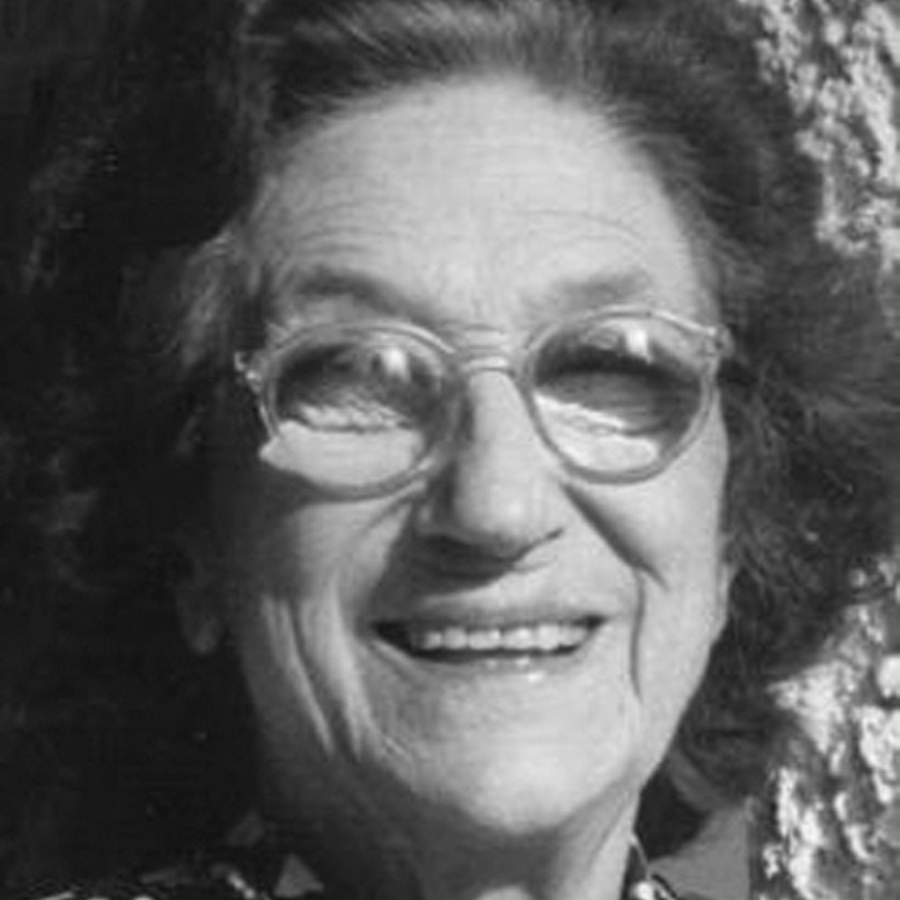 Marjorie LeMay, MD
Marjorie LeMay, MD
Joined Beth Israel Hospital in 1968
Dr. Marjorie LeMay joined the Beth Israel Radiology staff in 1968, bringing with her a world-class reputation in neuroradiology. She grew up on a farm in Kansas and was one of the first women accepted at the Kansas University Medical School in 1938. During World War II, she obtained a radiology residency at Presbyterian Hospital, Columbia University, in New York City. Dr. LeMay was then invited to join the Columbia radiology faculty and remained there until 1953 when she moved to Boston with her husband and joined the staff at Boston University in 1954.
Dr. LeMay was appointed to the Tufts University medical faculty in 1959, and in the early 1960s, she received part-time appointments at the Peter Bent Brigham Hospital and the Massachusetts General Hospital. She was one of the top experts in brain anatomy and a foremost consultant in most aspects of neuroradiology. Much of her reputation was established before computed tomography created a dramatic advance in imaging the neurological system. Among her many accomplishments, Dr. LeMay spent a year on the faculty of the American University in Beirut, Lebanon.
Melvin Clouse, MD 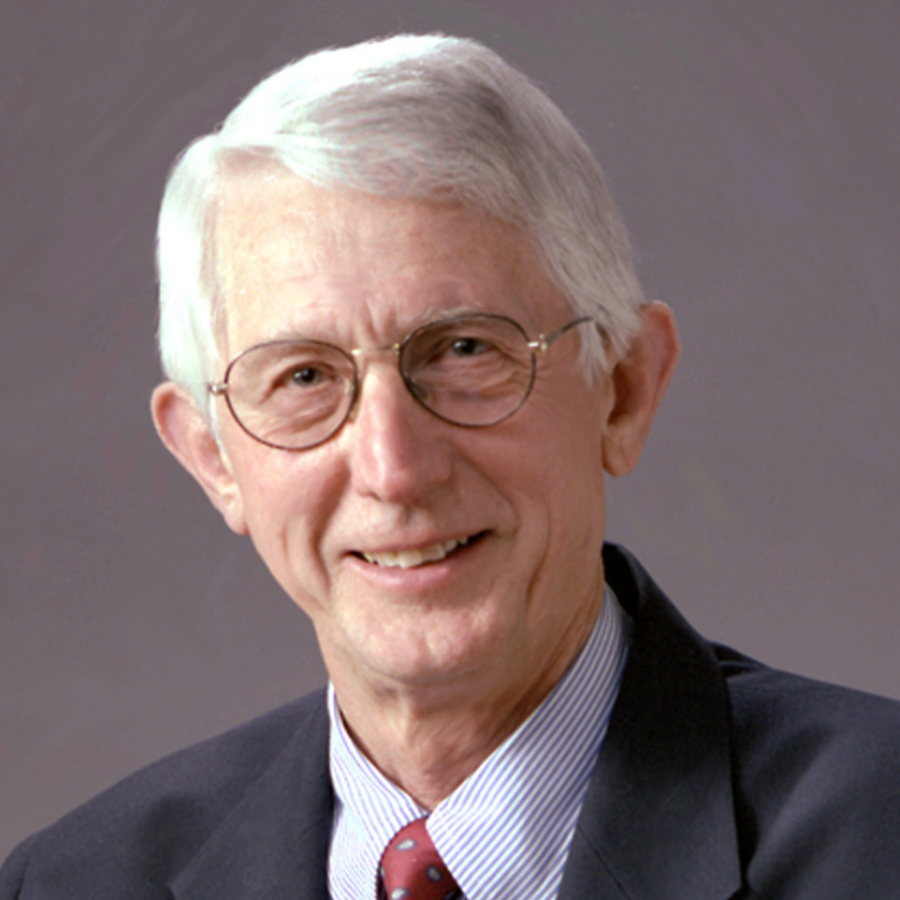
Joined New England Deaconess Hospital in 1969
Dr. Melvin (Mel) Clouse, Deaconess Professor of Radiology at Harvard Medical School, was a visionary leader, researcher, and pioneer. His career spanned more than five decades of cutting-edge research and clinical contribution in academic medicine that shaped our understanding of cardiovascular and interventional radiology in the institution of less invasive diagnostic imaging and invasive interventional techniques locally, nationally, and internationally. He served as the Chair of Radiology for 23 years at the New England Deaconess Hospital and the Beth Israel Deaconess Hospital. During his tenure at the Deaconess Hospital, he established an academic radiology department with a radiology residency, fellowships in interventional radiology, body imaging, nuclear radiology, and a national cancer research training program.
Nationally, he served the American College of Radiology, the American Board of Radiology, the Radiological Society of North America, and the American Roentgen Ray Society. He received several grants (NIH and non-federal), published over 235 manuscripts in peer-reviewed journals, and was active in several multicenter cardiovascular imaging trials globally. His vision and subsequent outreach efforts resulted in invited lectures on various aspects of his research and leadership in medicine around the globe. Throughout his distinguished career, he was a servant leader who fostered interpersonal relationships and the exchange of research ideas among researchers on a global scale in concert with established clinical training programs.
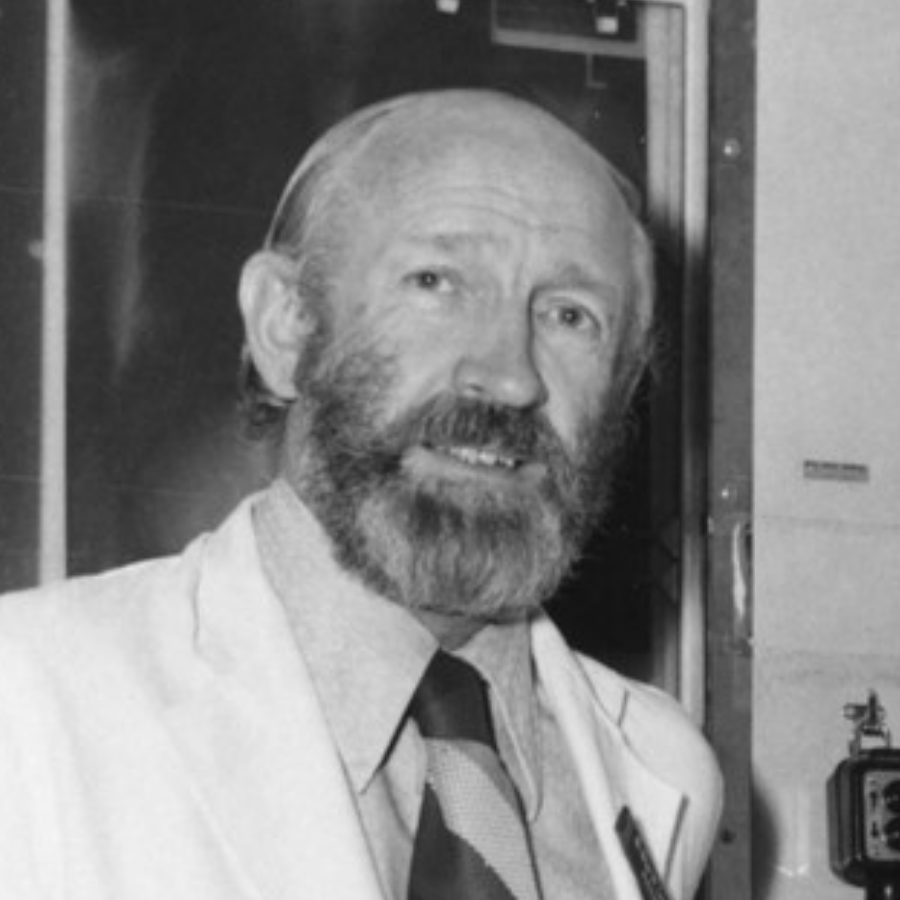 Brian Leeming, MD
Brian Leeming, MD
Joined Beth Israel Hospital in 1970
Dr. Brian Leeming was born in Christchurch, New Zealand, in 1924, received his degree from Otago University Medical School in 1951, and completed his radiology studies at Guys Hospital in London, England, in 1958.
While based in England, Dr. Leeming met Dr. Simon, who was visiting British medical centers where he had trained. They were both interested in using computers to sort radiology data and classify diagnoses. In 1970, Dr. Simon hired Dr. Leeming as a Beth Israel radiologist and Harvard Medical School lecturer. Together, they developed the computerized language information processing (CLIP) system, which BIH used for several years.
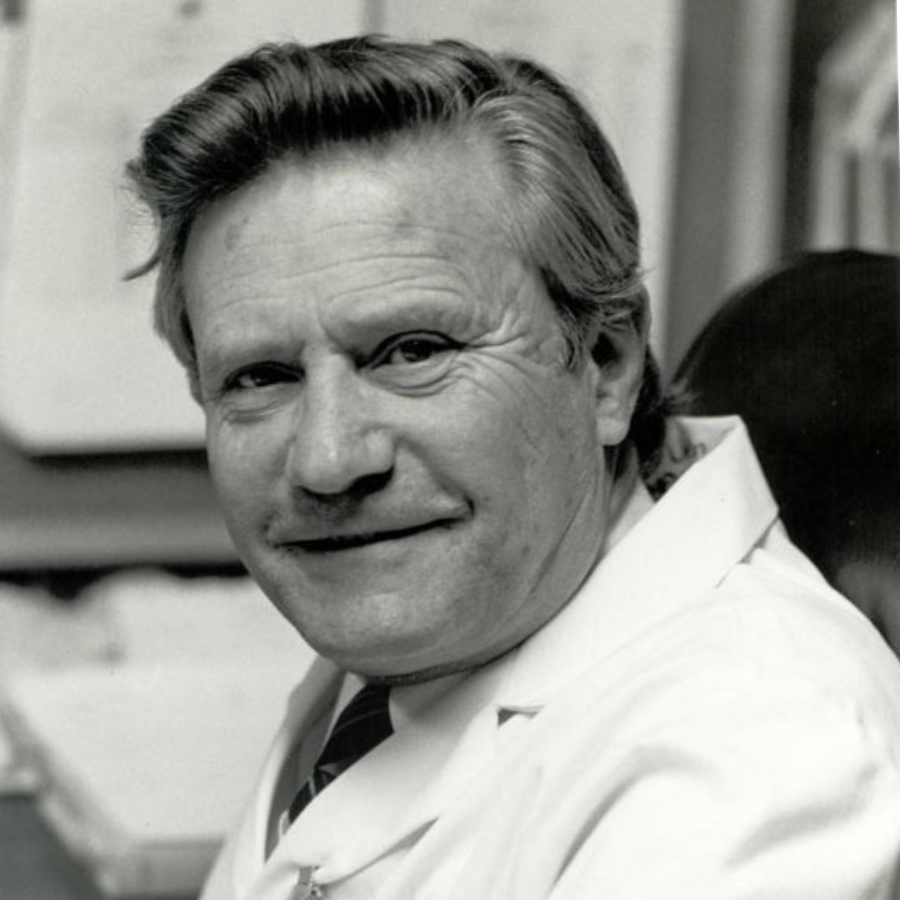 Sven Paulin, MD, PhD
Sven Paulin, MD, PhD
Joined Beth Israel Hospital in 1970
The son of a Swedish mother and a German father, Sven Paulin, MD, was born in Bad Münster am Stein-Ebernburg, Germany, and spent his youth there. He began his medical training at the University of Mainz and completed his first degree in 1951. He moved to the Karolinska Institute of Medicine and Surgery at the University of Stockholm. Dr. Paulin later completed six years of radiology training at multiple institutions in Sweden.
In 1969, Dr. Herbert Abrams invited Dr. Paulin, who had since emigrated to the United States, to join the Peter Bent Brigham Hospital as a visiting associate professor. A year later, when the Beth Israel Radiology Chair position became available, Dr. Abrams successfully urged its selection committee to choose Dr. Paulin, who was then appointed to the rank of Full Professor at Harvard Medical School. Among countless contributions to our subspeciality, Dr. Paulin is credited as the first to describe coronary angiography.
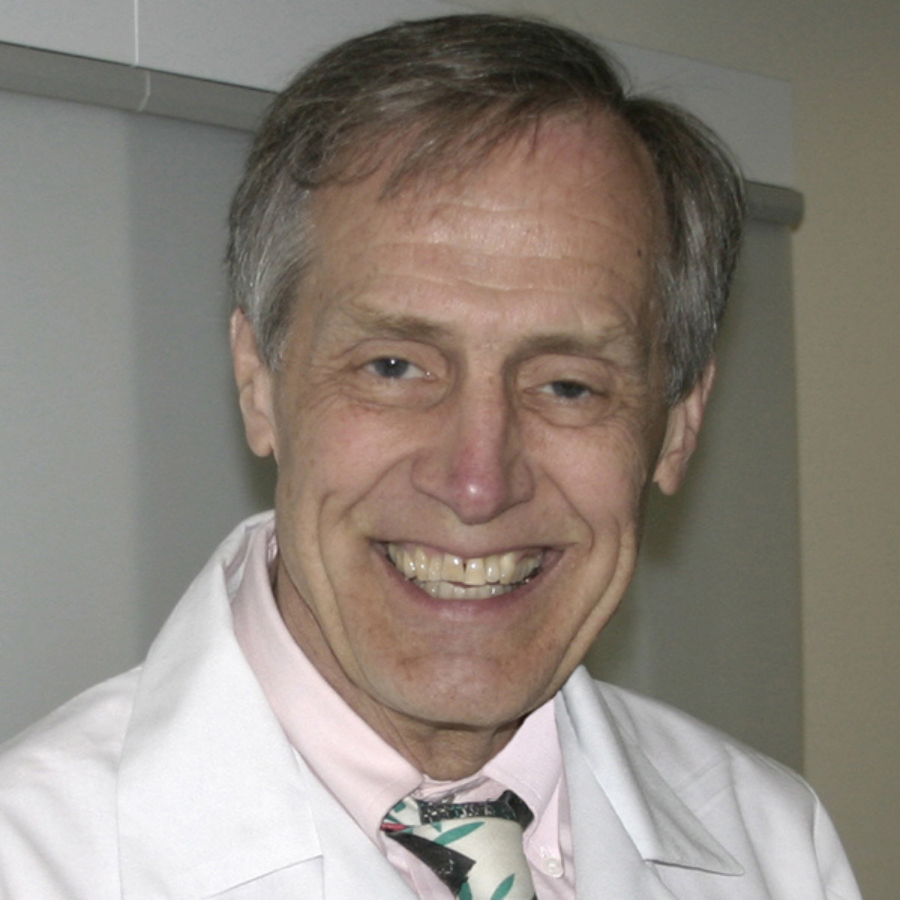 Ferris Hall, MD
Ferris Hall, MD
Joined Beth Israel Hospital in 1971
Dr. Ferris Hall is an imaging pioneer who joined the faculty of the Department of Radiology at Beth Israel Hospital (BIH) in 1971 after completing his radiology residency at Peter Bent Brigham Hospital. Dr. Hall retired in 2015 after almost a half-century in the field.
Dr. Hall was a practicing boarded internist in the U.S. Army Medical Corps before his radiology residency at Peter Bent Brigham Hospital (1968-1971), where Dr. Sven Paulin worked as a visiting radiology professor. After Dr. Paulin became Chairman of Radiology at Beth Israel Hospital (BIH) in 1970, he recruited Dr. Hall to join him as a staff radiologist and Instructor in Radiology when Dr. Hall completed his residency.
Year after year, Dr. Hall was recognized as an outstanding teacher for radiology residents, fellows, and medical students and was promoted to Full Professor at Harvard Medical School in 1993. Most recently, a teaching award has been named for him in the BIDMC Radiology Department in honor of his tremendous teaching and scholarship: The Ferris Hall Faculty Award for Excellence in Teaching. In his career, Dr. Hall published 70 scholarly papers, most of which related to joint arthrography and breast imaging, and he set what may have been a literary record with the publication of more than 270 letters to editors in multiple radiology and medical journals.
Barry Sacks, MD 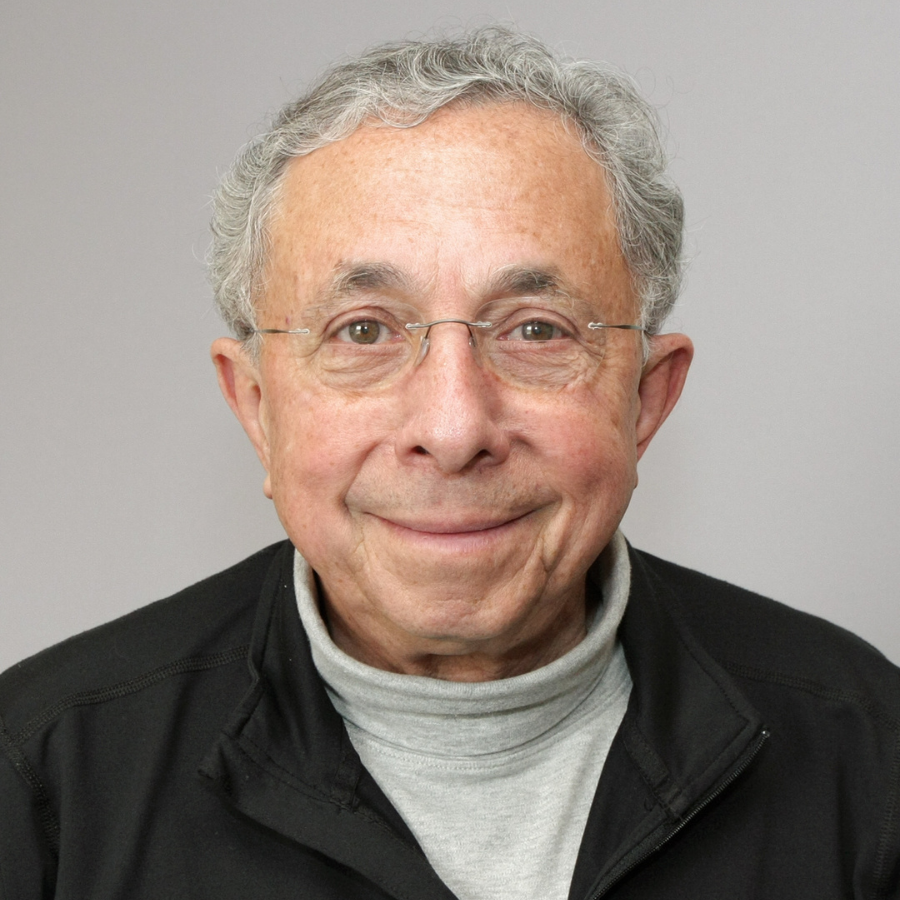
Joined Beth Israel Hospital in 1974
Dr. Barry Sacks followed Drs. Simon, Joffe, and other South African-trained doctors to Boston, where he began his Beth Israel radiology residency in 1974. Born and raised in Johannesburg, he graduated from medical school at the University of Witwatersrand in 1969. This was followed by a medical internship at Baragwanath Hospital, a surgical internship at the General Hospital, an obstetric-gynecology internship at the Coronation Hospital, and a pediatric internship at the Baragwanath Hospital, all in South Africa.
Dr. Sacks became Chief Resident at Beth Israel in 1976 and stayed a fourth year as a fellow in interventional radiology. He was certified by the American Board of Radiology in 1978 and remained on the BI radiology staff until he left for private practice at the Leonard Morse Hospital in 1982. In 1990, that hospital became the MetroWest Medical Center and Dr. Sacks became its Chief of Radiology in 1999 while retaining his clinical faculty appointment at Beth Israel.
Dr. Sacks' area of subspecialization is interventional radiology, for which he holds a Certificate of Added Qualification (CAQ). He has acquired 21 patents for catheters, probes, guidewires, and various interventional procedure techniques. In 2010, he accepted a full-time reappointment at BIDMC as Section Chief of Interventional Radiology and served in that role until 2013. He then remained on staff as an attending and part-time Associate Professor of Radiology at Harvard Medical School.
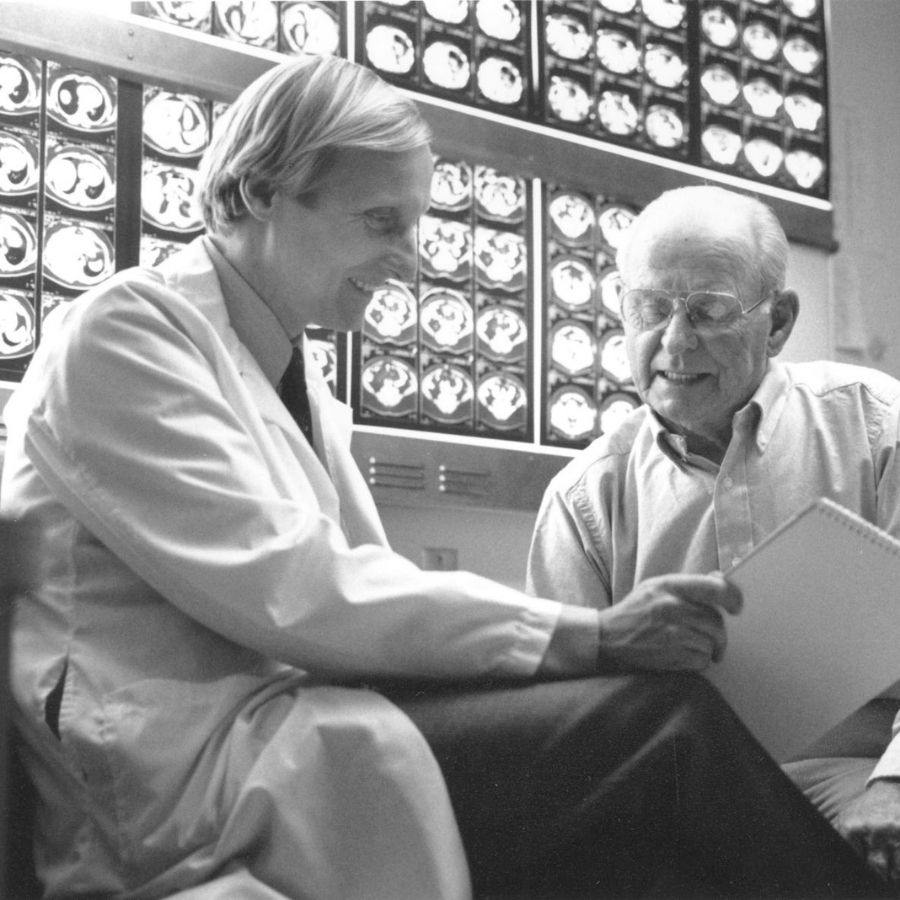 Philip Costello, MD
Philip Costello, MD
Joined New England Deaconess Hospital in 1975
Following medical school and house physician positions at London University in England, Dr. Philip (Phil) Costello, pictured to the left, entered a radiology residency at the University of Toronto in Canada. He became certified in nuclear medicine and radiology and was hired by Dr. Melvin Clouse at New England Deaconess Hospital in 1975, as chief of thoracic imaging and CT, a role he maintained until 1996.
In Dr. Costello’s responsibility for CT, he established a clinical research center, in which one of his contributions was the adoption of spiral CT devices. He helped validate applications of spiral CT units for vascular imaging, pulmonary emboli, cardiac disease, and aortic pathology. He published more than 100 peer-reviewed articles and multiple abstracts and book chapters.
In 1996, around the time of the Beth Israel Deaconess merger, Dr. Costello left NEDH to become director of diagnostic radiology at the Queen Elizabeth Hospital in Adelaide, South Australia. Subsequently, he became chair of radiology at the Medical University of South Carolina at Charleston.
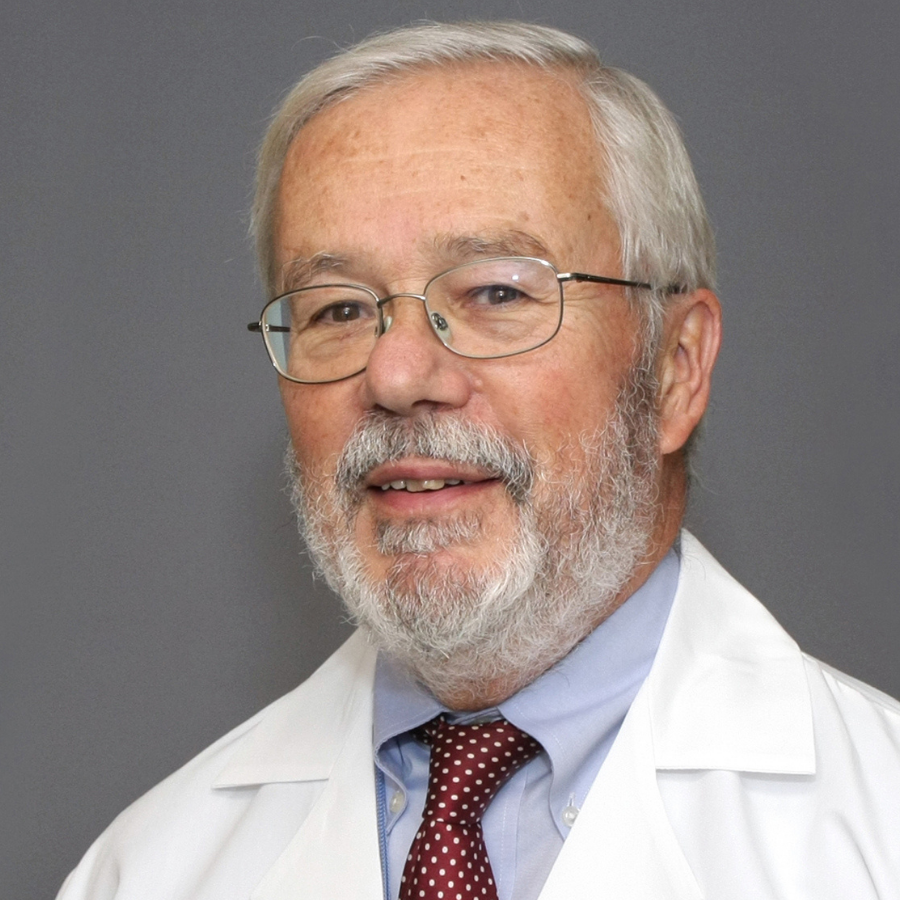 Robert Kane, MD
Robert Kane, MD
Joined New England Deaconess Hospital in 1976
Dr. Robert (Bob) Kane dedicated more than 45 years of service to the Department of Radiology. With a medical degree from Tufts University School of Medicine, Dr. Kane completed his residency in diagnostic radiology at Massachusetts General Hospital and then a fellowship in angiography and ultrasound at New England Deaconess Hospital. Dr. Melvin Clouse extended a Deaconess staff position to Dr. Kane in 1976, and in 1979, the Ultrasound section established a fellowship that Dr. Kane managed.
In 1982, Dr. Kane was appointed Chief of Ultrasound. In the late 1980s, he became Vice-President, then in 1991, President of the Deaconess medical staff. His scientific ultrasound contributions include the first real-time ultrasound; duplex compression sonography and the first large prospective study comparing ultrasound to venography; two-dimension echocardiography; initiating prostate ultrasound scanning (first in Boston) for the detection of prostate cancer; pioneering the use of ultrasound in operating rooms for abdominal cases and in neurosurgery; and the first intraoperative ultrasound-guided tumor ablation program in North America, using cryoablation to treat respectable liver tumors.
In 1966, Dr. Kane became the Director of the combined Ultrasound section and Associate Radiologist-in-Chief for Administrative Affairs of the merged Deaconess/Beth Israel Radiology departments. He was appointed Department Vice-Chair and achieved a Full Professorship of Radiology at Harvard Medical School in 1999. After Dr. Kane's retirement in 2022, our department established the Bob Kane Teaching Awards, encompassing all recognitions for teaching excellence to radiology medical students, residents, and fellows.
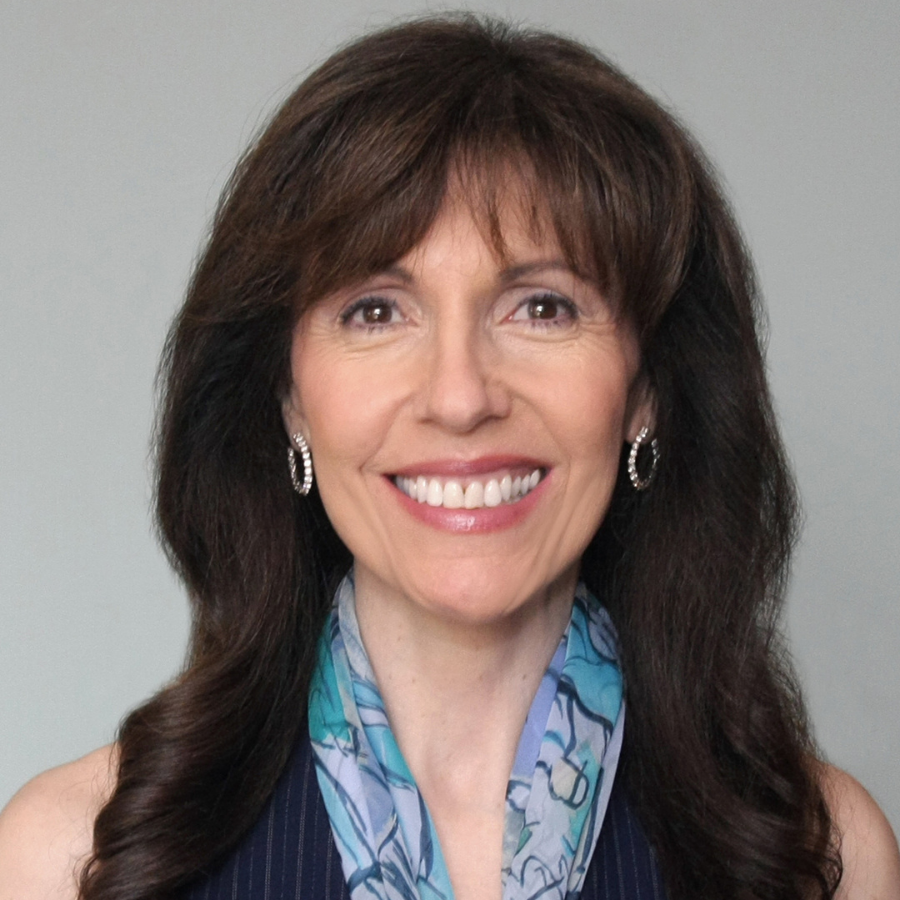 Gillian Lieberman, MD
Gillian Lieberman, MD
Joined Beth Israel Hospital in 1986
In 1986, Beth Israel hired another émigré from South Africa, Gillian Lieberman, MD. Dr. Lieberman came to Boston in 1979 and spent seven years at Tufts Medical Center before joining Beth Israel as coordinator of medical student radiology instruction and rising to director of the program. With Dr. Lieberman at the helm, it became the most popular Harvard Medical School Radiology rotation, with as many as 100 Harvard students rotating through the department each year. In addition, medical students from other schools often opted for this rotation.
Dr. Lieberman helped develop the Harvard medical student radiology program with cross-institutional colleagues Drs. Kitt Shaffer and Robert Novelline. She received many awards, "Teacher of the Year" accolades, and votes of acclaim from Harvard medical students. Dr. Lieberman also played an active role in training BI radiology residents and, for several years, was Associate Residency Director. In 2010, she shared the Radiological Society of North America's "Educator of the Year" award with Dr. Shaffer of Boston University.
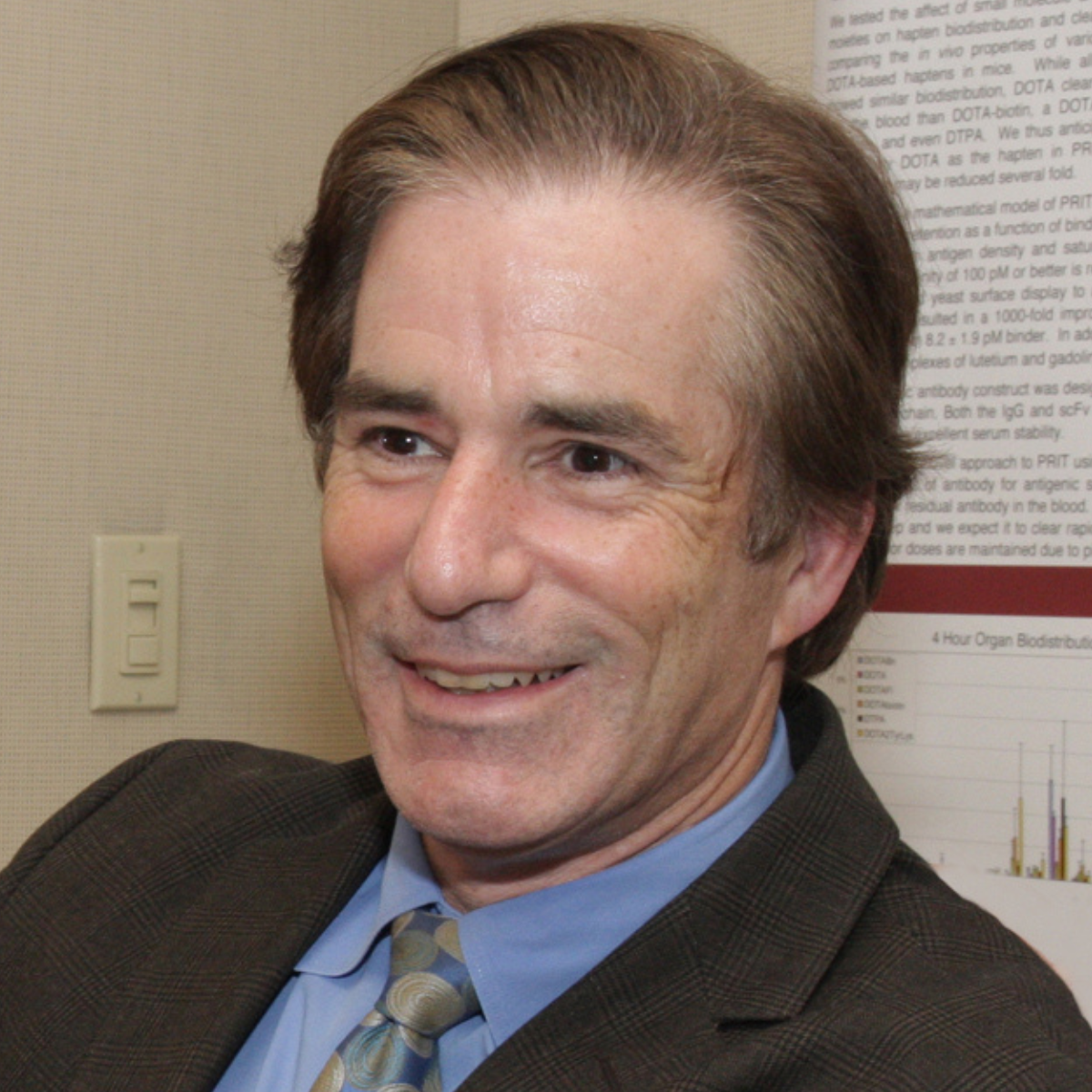 Robert Edelman, MD
Robert Edelman, MD
Joined Beth Israel Hospital in 1988
In 1988, Dr. Sven Paulin recruited Dr. Robert (Bob) Edelman, his former resident, to return to BI and head a new MRI section. Dr. Edelman previously wrote, "As director of MRI at BIDMC for 12 years, I recruited and led an interdisciplinary MRI research group that became internationally recognized for its pioneering contributions in the field of magnetic resonance imaging. The group was the first to demonstrate the clinical feasibility of coronary artery imaging and characterization of stroke, and to perform anatomic and functional MRI of the lungs." He added: "We developed and/or implemented numerous techniques for MR imaging and angiography that are now in widespread clinical use, including segmented turbo FLASH, magnetization transfer, MR angiography of the circle of Willis, and double inversion black blood imaging I contributed in several aspects: as director of the research group, as an inventor of new techniques...as coordinator of clinical research studies, and as a mentor of other researchers and clinicians within our group."
Dr. Edelman involved investigators from several other medical specialties in using MRI for different clinical purposes. He did pioneering work in using MRI to assess cardiovascular disease in collaboration with Dr. Warren Manning, a cardiologist with a dual appointment in radiology. This collaborative approach, which continued at BIDMC, showed that it was possible to work across specialties to deliver state-of-the-art MRI technology to evaluate patients with cardiac disease. Similarly, Dr. Edelman worked with Dr. Steven Warach, a BIDMC neurologist, to show that diffusion-weighted MRI could be used to identify regions of the brain affected by acute stroke. Dr. Edelman applied rapid MR imaging sequences in collaboration with Dr. Deborah Levine, the co-chief of ultrasound, to show that fetal MRI was useful in determining abnormalities in utero. All of these programs achieved international recognition and clinical acceptance, and Dr. Edelman's MRI projects gained him an active role in the International Society of Magnetic Resonance in Medicine and a gold medal from the ISMRM in 1994.
Jonathan B. Kruskal, MD, PhD, FSAR, FACR 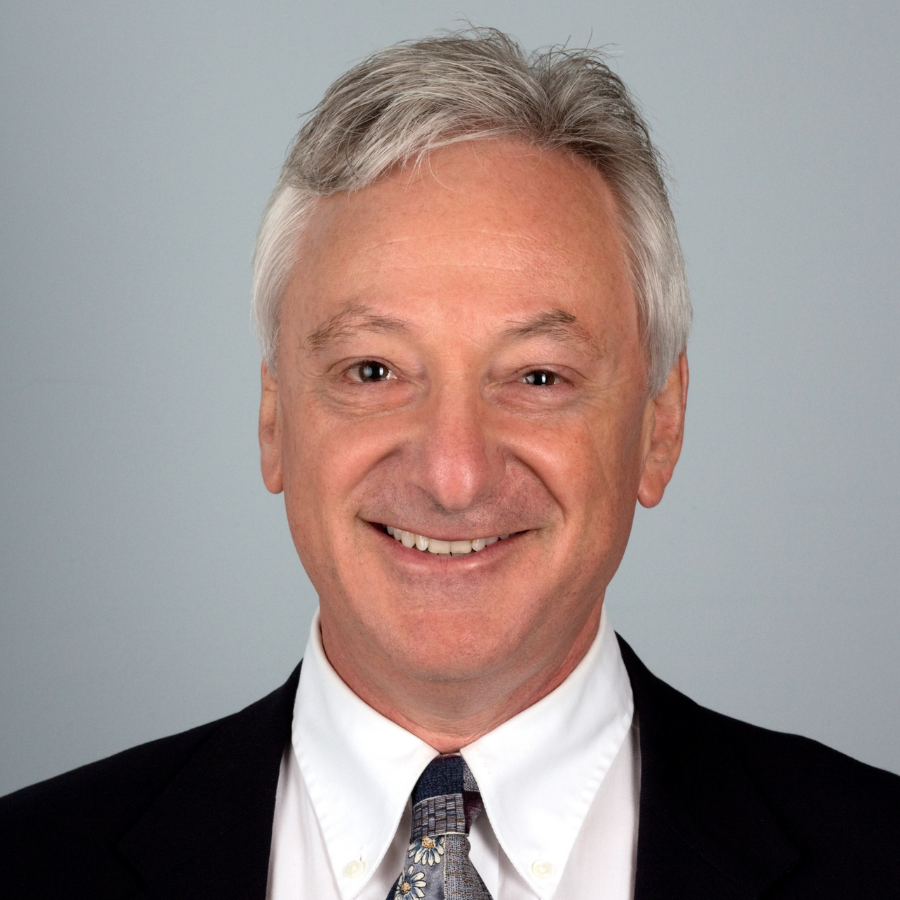
Joined New England Deaconess Hospital in 1989
A South African native, Dr. Jonathan (Jonny) Kruskal has served as Chair of the BIDMC Department of Radiology since 2008. With his MB, ChB, from the University of Cape Town (UCT) and his PhD in molecular biology and liver tumor physiology from UCT Medical School, Dr. Kruskal emigrated from South Africa to the United States in 1987 and joined Deaconess Hospital's Department of Radiology as a research fellow in Dr. Melvin Clouse's liver laboratory in 1989.
Dr. Kruskal completed his diagnostic radiology residency (1990-1994) at the Deaconess, passed the radiology boards, and became a radiology staff member at the hospital. He rose to the rank of Assistant Professor at Harvard Medical School a year later, Associate Professor in 1999, and Full Professor in 2008, five months before ascending to Department Chair. He was the second South African, after Dr. Morris Simon, to be selected for this position. Before his promotion, Dr. Kruskal had been Section Chief of Abdominal Imaging and Director of Radiology Quality Management.
An internationally recognized lecturer and teacher, he served as President of the Society of Abdominal Radiology (2019-2020) and President of the American Roentgen Ray Society (2021-2022), the first and oldest radiology society in the United States. Dr. Kruskal is a prolific author, has written hundreds of scholarly publications, and is a consultant to the editor for RadioGraphics (2021–2026), one of the premier education journals in diagnostic radiology. He is also at the forefront of quality improvement initiatives in radiology, particularly in peer-learning efforts. Dr. Kruskal holds the academic title of Melvin E. Clouse Professor of Radiology at Harvard Medical School.
Vassilios Raptopoulos, MD 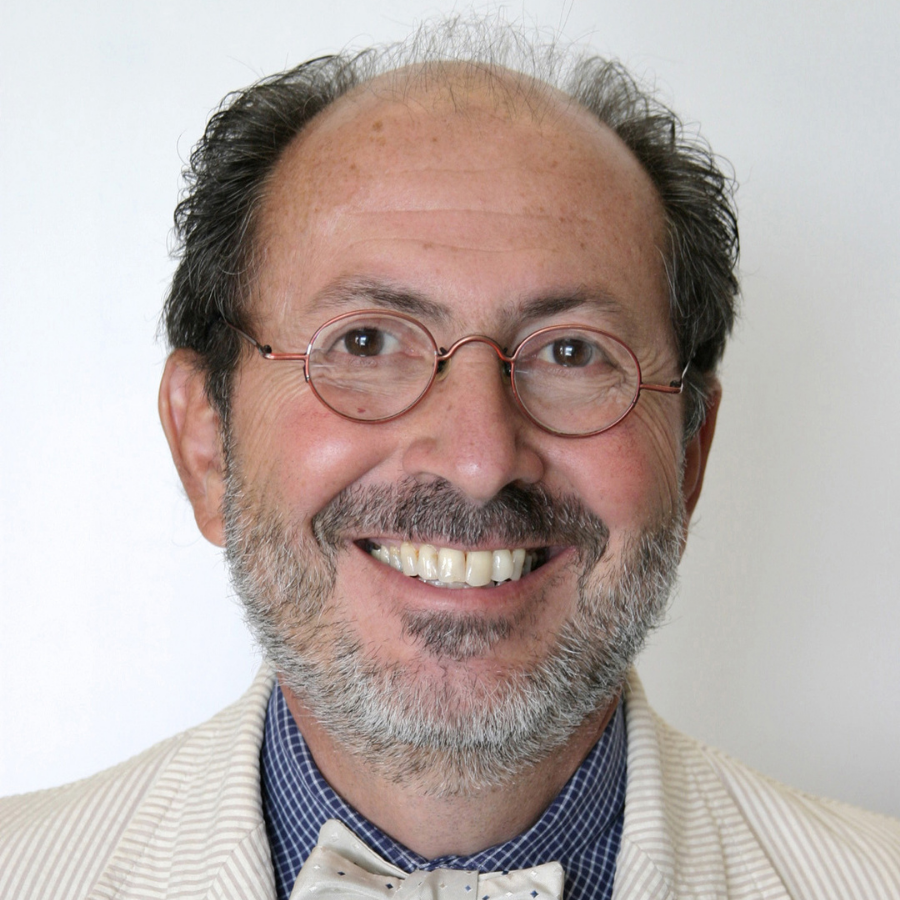
Joined Beth Israel Hospital in 1991
Dr. Vassilios Raptopoulos grew up in Thessaloniki, Greece, and attended the Aristotelion University School of Medicine. He spent a year in the 424nd General Military Hospital and then came to New York City for a year as an intern at the New York Polyclinic Hospital. In 1972, he began a residency in internal medicine at the Maimonides Medical Center in Brooklyn, N.Y., before switching to a radiology residency at Georgetown University in Washington, D.C. in 1973. He remained at Georgetown for a computed tomography and ultrasound fellowship before joining the University of Massachusetts Medical School staff in 1977 and ultimately rising to Professor of Radiology.
While at the University of Massachusetts, Dr. Raptopolous played a broad role in the radiology faculty launching a section on ultrasound and a body CT group, and he organized a team for abdominal imaging and fellowships. Additionally, he was among the earliest radiologists who experimented with CT contrast media, visualization of the liver, and CT applications for trauma patients. He developed the University of Massachusetts splenic rupture score based on CT findings.
In 1991, Dr. Raptopoulos joined the radiology staff at Beth Israel, where his principal areas were body CT and ultrasound. With the arrival of a new Department Chair, Dr. Herbert Kressel, in 1993, Dr. Raptopoulos was appointed to the departmental executive committee and became Vice-Chair for Clinical Affairs. He has published 135 scientific papers plus 33 reviews and chapters.
Herbert Kressel, MD 
Joined Beth Israel Hospital in 1993
Dr. Herbert (Herb) Kressel was Radiologist-in-Chief at Beth Israel Hospital (1993-1996) and then Beth Israel Deaconess Medical Center (2000-2007). A prolific investigator and inventor, Dr. Kressel made his mark as a diagnostic radiologist in MRI of the abdomen and pelvis, particularly in the liver, pancreas, prostate, and rectum. He described the MR appearance of multiple conditions, from colorectal metastases and uterine anomalies to soft-tissue neoplasms, and his research also included evaluations of contrast agents and comparisons of imaging technologies. He has contributed greatly to the role of imaging in rectal and prostate tumor staging.
A graduate of Brandeis University in Waltham, Mass., Dr. Kressel earned his MD degree from the University of Southern California in Los Angeles and completed a medical internship at the University of Washington Hospital in Seattle and a radiology residency at the University of California, San Francisco (UCSF) where he also completed a National Institutes of Health diagnostic radiology fellowship. In 1977, he moved to Philadelphia, where he advanced from Assistant to Professor of Radiology at the University of Pennsylvania, plus Chief of MR Imaging at the Hospital of the University of Pennsylvania. In 1993, he joined Harvard Medical School as the Miriam H. Stoneman Professor of Radiology and served as President and CEO of BIDMC (1998-2000) before joining Radiology, the most prominent imaging research journal in our field, as Editor (2008-2017).
 Deborah Levine, MD
Deborah Levine, MD
Joined Beth Israel Hospital in 1994
Deborah (Debbie) Levine, MD, is an internationally recognized expert in obstetric ultrasound, women’s imaging, and fetal brain MRI. She joined Beth Israel Hospital as an Instructor in Radiology in 1994 and was promoted to Full Professor of Radiology in 2008. During her tenure, Dr. Levine served as Co-Chief of Ultrasound (2001-2015) in partnership with Dr. Robert Kane; Director of our OB/GYN Ultrasound Division (2001-2018); Director of the Women’s Imaging Fellowship Program (1996-1998; 2001-2014); and Vice-Chair of our Academic Affairs Division (2011-2018). She also served as Director of the Mentorship Program for Radiology Faculty (2006-2022).
Dr. Levine published 86 original, peer-reviewed publications, 67 review articles, and 70 book chapters. She was an editor or co-editor of six books and participated as an author or co-author of 42 practice guidelines/standards committees that shaped the trajectory of our field. She also contributed to over 10 major radiological and medical journals, including Radiology, the premier journal for our specialty, as Deputy Editor (2007-2008), Senior Deputy Editor (2008-2017), and Consultant to the Editor (2017-2021).
Dr. Levine was awarded fellowship status by the Society of Radiologists in Ultrasound in 1999 and the American Association of Women Radiologists in 2019. Her awards and honors include receiving the American Board of Radiology’s Lifetime Service Award in 2015 and the prestigious RSNA Gold Medal Award in 2018. Today, we recognize Dr. Levine with the Annual Deborah Levine Lecture on Women's Health.
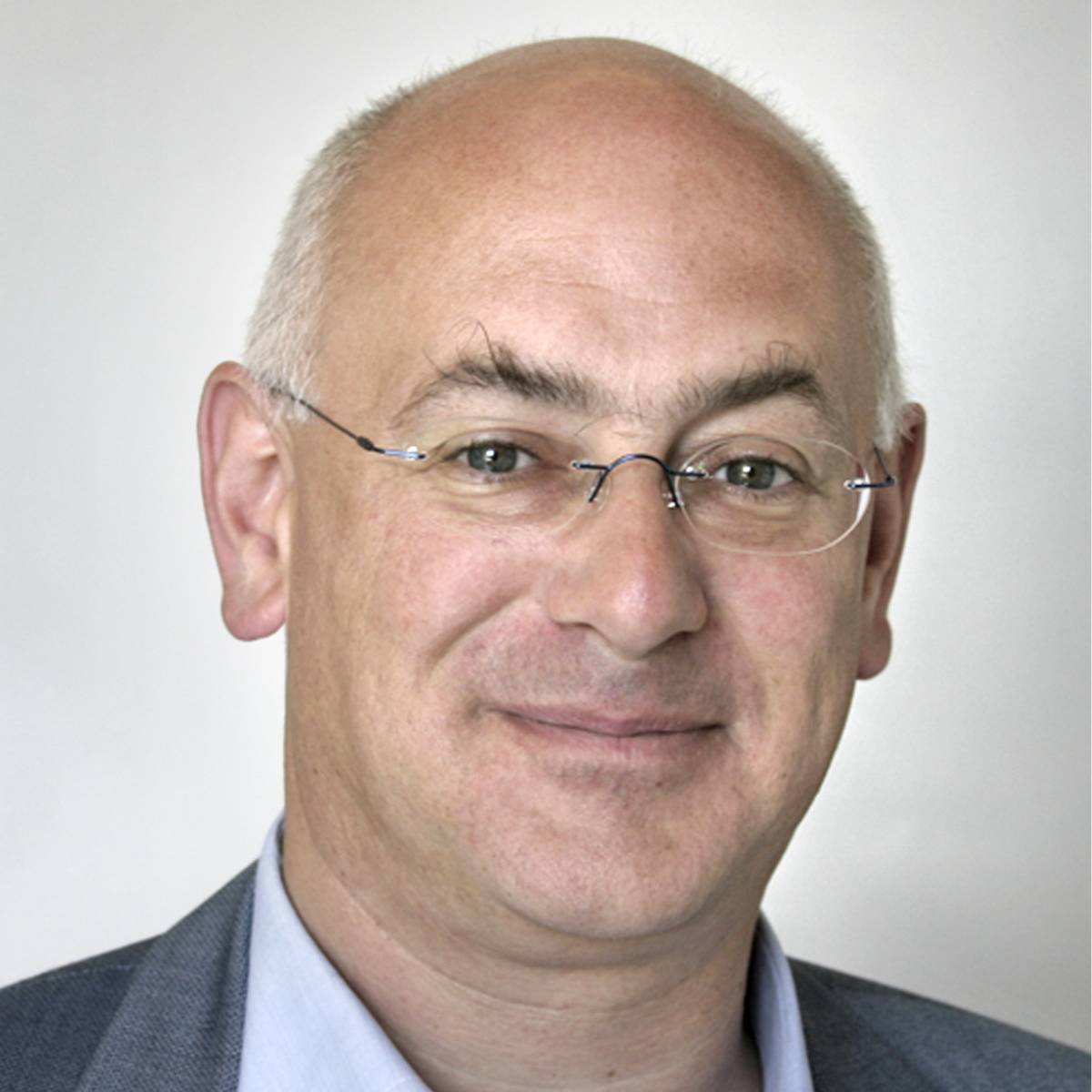 Alexander Bankier, MD, PhD
Alexander Bankier, MD, PhD
Joined Beth Israel Deaconess Medical Center (BIDMC) in 1999
Dr. Alexander (Alex) Bankier is an Austrian native who received his education, medical school, and post-doctoral training in his home of Vienna. Specifically, Dr. Bankier studied at the University of Vienna, the medical school where the late Dr. Felix Fleischner had trained and practiced more than half a century earlier. Dr. Bankier completed his medical degree in 1990, took brief residencies in internal medicine and surgery in Vienna hospitals, and started his radiology residency in 1992. He spent 1994 in a radiology fellowship at the Centre Hospitalier Universitaire Lille in France before returning to Vienna.
In 1999, Dr. Bankier arrived at BIDMC to study MRI with Dr. Robert Edelman for two years before returning to Austria. According to Dr. Bankier, his time with Dr. Edelman involved "...intense investigation and multi-disciplinary collaboration that has continued and has resulted in a series of original papers, posters, and presentations, both nationally and internationally on the topic of MR imaging of the lung."
When Dr. Bankier returned to BIDMC as a faculty appointee in 2007, he was made a member of the Fleischner Society of Distinguished Chest Radiologists and Pulmonologists that same year. In 2008, Dr. Kressel appointed him as a deputy editor of Radiology. After several additional years of service at BIDMC, Dr. Bankier joined UMass Memorial Health's Department of Radiology, where he currently serves as a full professor, vice chair of academic affairs, and division chief of cardiothoracic imaging.
Phillip Boiselle, MD 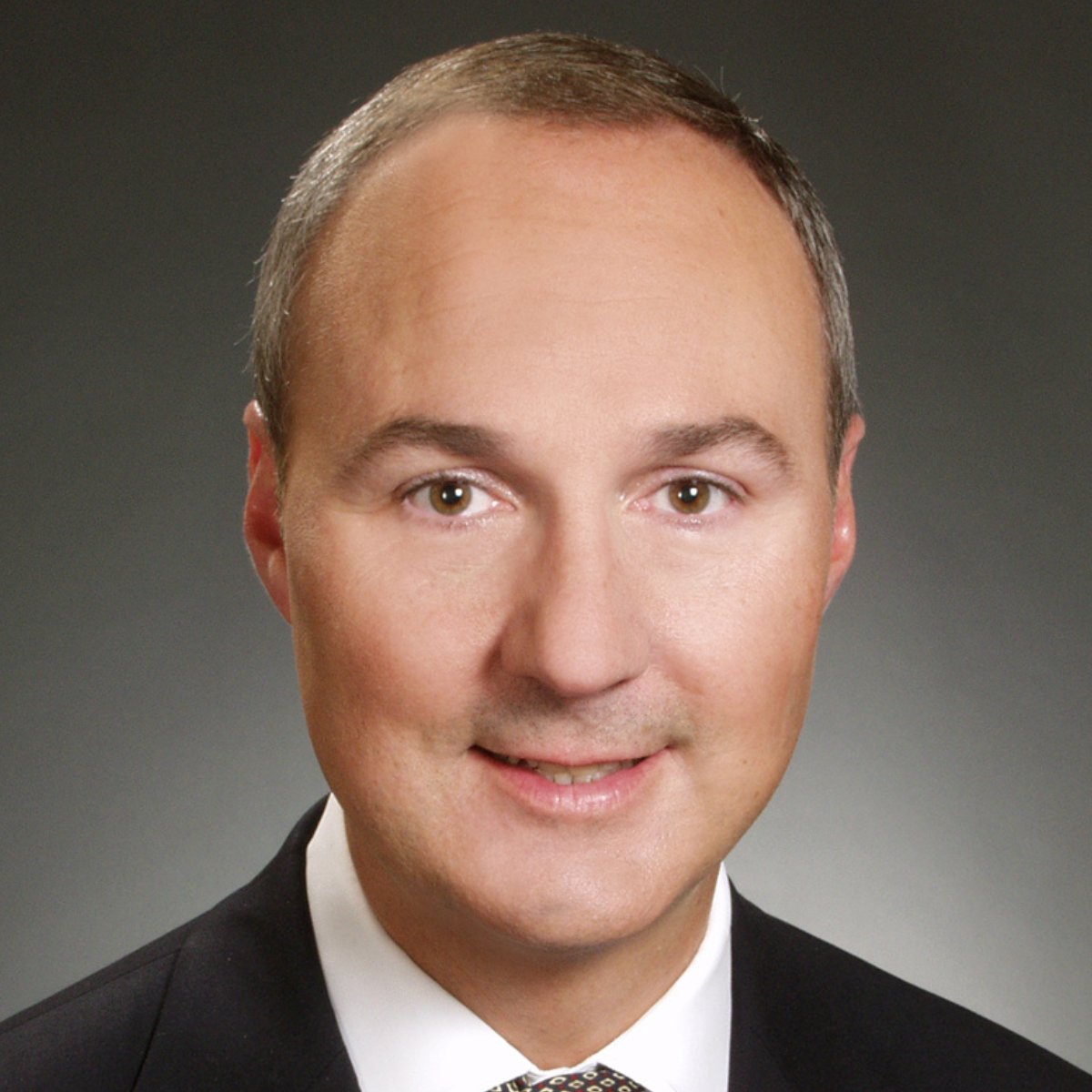
Joined BIDMC in 1999
When Dr. Phillip (Phil) Boiselle joined the radiology staff at BIDMC in 1999, he was appointed as the thoracic imaging section director. He previously completed his undergraduate degree at the University of North Carolina in Chapel Hill in 1986. That same year, he moved to Duke University Medical School in nearby Durham. In 1990, Dr. Boiselle returned to the University of North Carolina for his internship and then began his diagnostic radiology residency at Yale University in 1991. Upon completing his residency in 1995, he accepted a fellowship in thoracic radiology at Massachusetts General Hospital in Boston; the following year, he was appointed as an assistant professor of radiology at Temple University in Philadelphia.
When Dr. Boiselle accepted the BIDMC chest radiology section leadership, it had only his full-time position and two part-time radiologists. Over his decade, it expanded to four full-time and three part-time radiologists, and along with most of the department, the chest section converted to digital images in 2000.
In 2002, Dr. Boiselle was named the associate program director for radiology residency, which was in addition to his section chief role and responsibility for a thoracic imaging fellowship program. His area of investigation was related primarily to advancing airway imaging and the study of lung cancer screening with low-dose CT procedures. The publication of his 60 scholarly articles and 31 scientific book chapters, plus editing four books about thoracic imaging, began during his MGH fellowship. In 2009, Dr. Boiselle became editor of the Journal of Thoracic Imaging.
Muneeb Ahmed, MD, FSIR 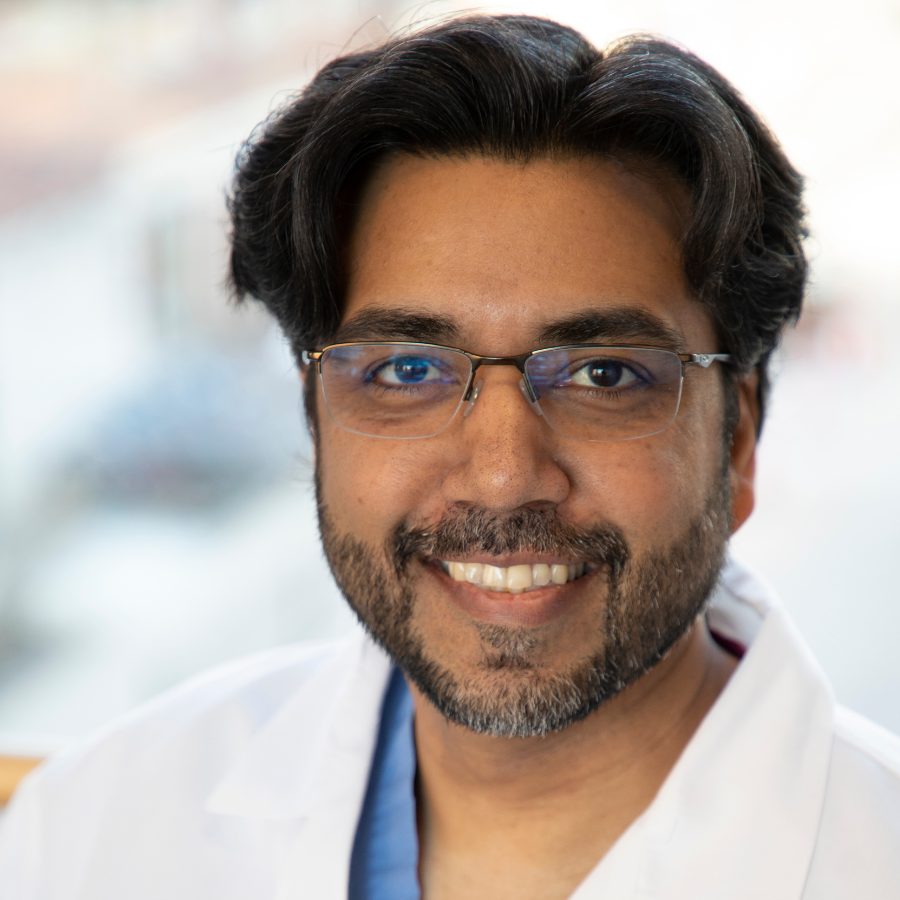
Joined BIDMC in 2000
Dr. Ahmed is an accomplished clinician, researcher and educator with internationally recognized expertise in interventional radiology treatments for cancer, including image-guided tumor ablation and embolization. Since 2014, he has served as Chief of the Division of Interventional Radiology and Vice Chair of Radiology at BIDMC. He is also the Miriam H. Stoneman Professor of Radiology at Harvard Medical School. In 2025, Dr. Ahmed was named Chief of a new Division of Cancer Radiology at BIDMC and Chair of the Department of Imaging at Dana-Farber Cancer Institute.
Dr. Ahmed is immediate past president of the Society of Interventional Oncology and a former member of the Board of Directors of Harvard Medical Faculty Physicians at BIDMC. His clinical and research interests focus on tumor ablation-related biology; clinical interventional oncology outcomes in liver cancers; portal hypertension; and transplant interventions. He is the author of more than 180 original research papers, societal standards, chapters and invited reviews, and has received more than $8 million in grant funding as a principal investigator, including from the NIH and numerous society- and industry-funded grants. He is the recipient of multiple national and international awards, including the Society of Interventional Radiology’s prestigious Gary J. Becker Young Investigator Award, and the Journal of Vascular and Interventional Radiology’s Editor’s Award for Distinguished Research Study four separate times. Based on his expertise, he has lectured widely at national and international conferences within the field of interventional oncology.
Dr. Ahmed earned his medical degree from Aga Khan University Hospital in Karachi, Pakistan, and holds a Master of Science degree from Harvard Medical School. He joined BIDMC in 2000 as a Cancer Radiology Research Fellow and completed his residency training at the medical center, including serving as chief resident. He then completed his fellowship in Vascular and Interventional Radiology at the Johns Hopkins School of Medicine before returning to BIDMC as member of the faculty within Interventional Radiology. Dr. Ahmed is board-certified in Diagnostic and Interventional Radiology.
David C. Alsop, PhD 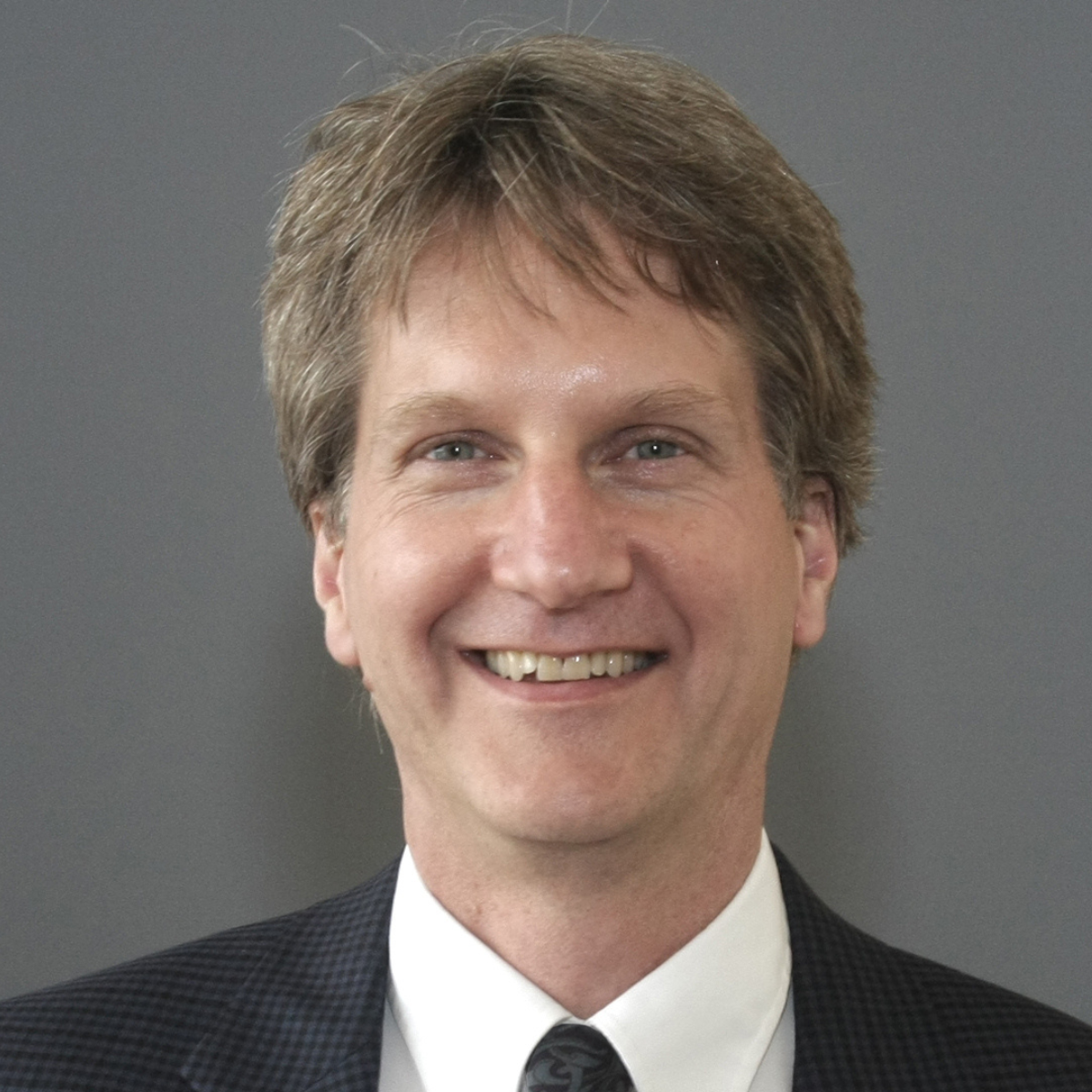
Joined BIDMC in 2000
Shortly after Dr. Robert Lenkinski's move to Boston, he recruited physicists R.L. Greenman and David C. Alsop, both of whom had been in the radiology department at the University of Pennsylvania. Dr. Alsop holds a doctorate in physics from the University of California in Berkeley, and was a post-doctorate at Penn, where he rose to faculty status in radiology and neurology. Dr. Alsop is a pioneer in developing and applying arterial spin labeling (ASL) to study perfusion in the brain and other body parts. He has demonstrated that ASL, which does not require the injection of any exogenous agent, can be used to determine tissue perfusion expressed in standard physiological units. Dr. Alsop has also proven that ASL is very useful in studying brain tumors and their response to therapy. He has shown that changes in ASL precede more conventional size-based indicators of response to therapy in both primary renal cell carcinoma and metastatic disease. As part of his scope of work as a staff scientist, Dr. Alsop has been involved in several multi-center trials evaluating ASL in a variety of adult and pediatric studies. He is a Professor of Radiology at Harvard Medical School and the Director of MRI Research at BIDMC. In 2024, Dr. Alsop was awarded a $9.1 million federal grant to advance the assessment and treatment of brain disorders in women. Read more.
Neil Rofsky, MD 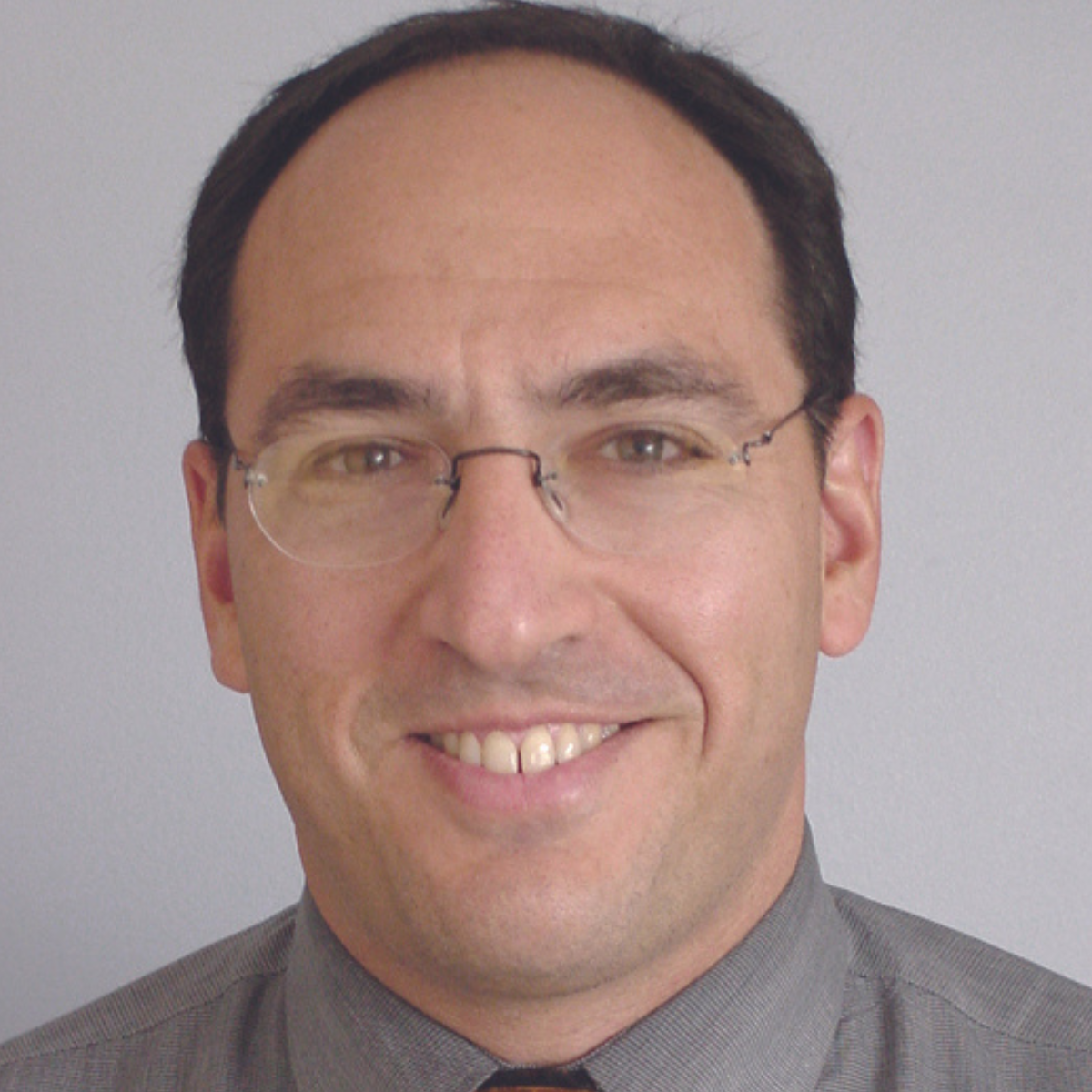
Joined BIDMC in 2000
When Dr. Edelman announced his departure from BIDMC, Dr. Kressel sought a successor with comparable experience. In 1999, Dr. Kressel established an MRI research team and needed a new expert to head the BIMDC clinical MRI section. His choice was Dr. Neil Rofsky, who had earned an international reputation as the director of body MRI imaging at the New York University Medical Center during his five-year tenure. Dr. Kressel persuaded Dr. Rofsky that the MRI research time, access to other investigators, and availability of contemporary MRI units would more than justify a move from New York. Dr. Rofsky signed on and reported in August 2000.
Dr. Rofsky attended the University of Maryland and received his undergraduate degree in 1981. He was accepted to the New York Medical College and graduated with his medical degree in 1985. After completing his internship at Middlesex University Hospital, Dr. Rofsky took a year-long nuclear imaging fellowship at the University of Utah before beginning his radiology residency at New York University, which he completed in 1991. His training also included fellowships in abdominal imaging with CT, ultrasound, and MRI, plus an MRI fellowship.
Dr. Rofsky joined the NYU radiology faculty in 1992, held the rank of assistant professor of radiology, and became an associate professor in 1998. He was appointed an associate radiologist at Harvard Medical School in 2000; by this time, he had published 55 scientific articles, with another 60 being accepted during his decade at BIDMC. In 2010, Dr. Rofsky left BIDMC to become Chair of Radiology at the University of Texas Southwestern Medical Center in Dallas.
David Hackney, MD 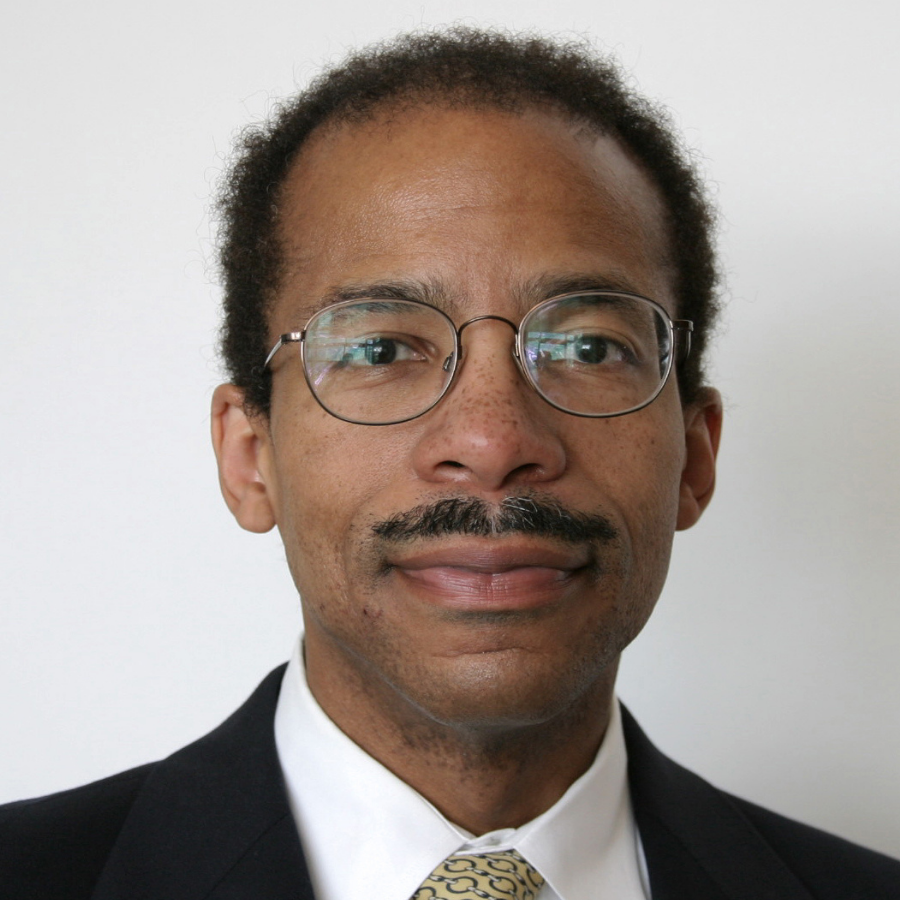
Joined BIDMC in 2003
Dr. David Hackney is a Professor of Radiology and an Assistant Dean for Faculty Development at Harvard Medical School. Dr. Hackney has been at BIDMC since July 2003, starting as the Chief of Neuroradiology, and now serving as the Radiology Vice Chair for Faculty Advancement, Mentoring, and Promotion.
Dr. Hackney founded a Radiology Department Faculty Development Committee and has led efforts to make the HMS process more transparent while helping BIDMC faculty progress in their careers. Before joining BIDMC, Dr. Hackney was a professor at UPenn, which included founding and leading the Radiology Department Faculty Development Committee. Additionally, Dr. Hackney served as the Chair of the Faculty Senate, representing the faculty throughout the medical school and the university.
Dr. Hackney earned an undergraduate degree from Harvard College and a medical degree from Cornell University Medical College. In addition, Dr. Hackney completed a diagnostic radiology residency at the University of California San Diego-affiliated hospitals and a fellowship in neuroradiology at Massachusetts General Hospital.
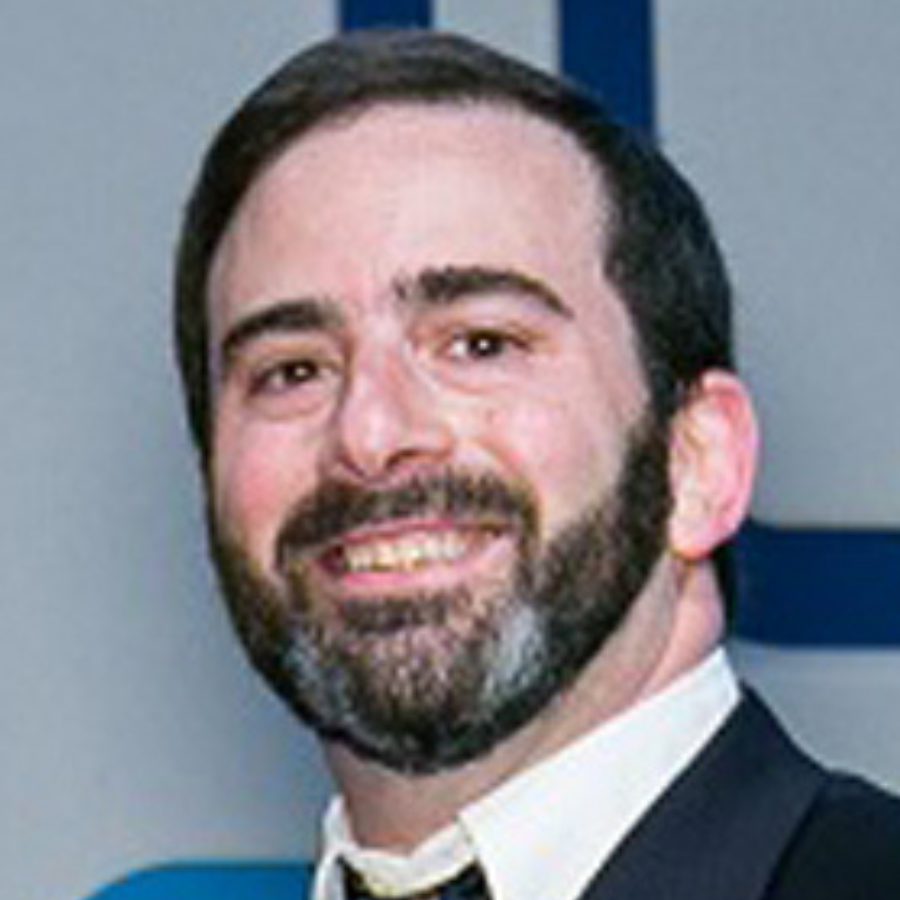 Nahum Goldberg, MD
Nahum Goldberg, MD
Prof. Nahum Goldberg, MD, undertook a sabbatical year (2008-2009) as a Fulbright Scholar at the Goldyne-Savard Gene Therapy Institute of the Hadassah Hebrew University Medical Center in Jerusalem, Israel. The goal of this study period was to work with Prof. Eithan Galun, director of the institute, to extend the paradigm of interventional therapies by developing new image-guided methods to improve gene and stem cell therapy.
Early results increasing gene transfection and stem cell delivery by transcatheter and percutaneous ablation techniques, respectively, were sufficiently promising for Dr. Goldberg to transfer his permanent appointment to Hadassah, where he continued to pioneer interventional oncology, gene, and stem cell therapy as the Unit Chief of Image-Guided Therapies and Interventional Oncology and Director of the Applied Radiology Laboratory.
Prof. Goldberg previously served as Director of Abdominal Intervention and Tumor Ablation for the Minimally-Invasive Tumor Therapies Laboratory at BIDMC. Today, he is the Vice-Chair for Research in the Department of Radiology at Hadassah Hebrew University Medical Center and an Interventional Oncologist and Full Professor at both Hebrew University, Jerusalem, Israel, and Harvard Medical School, Boston, MA.

